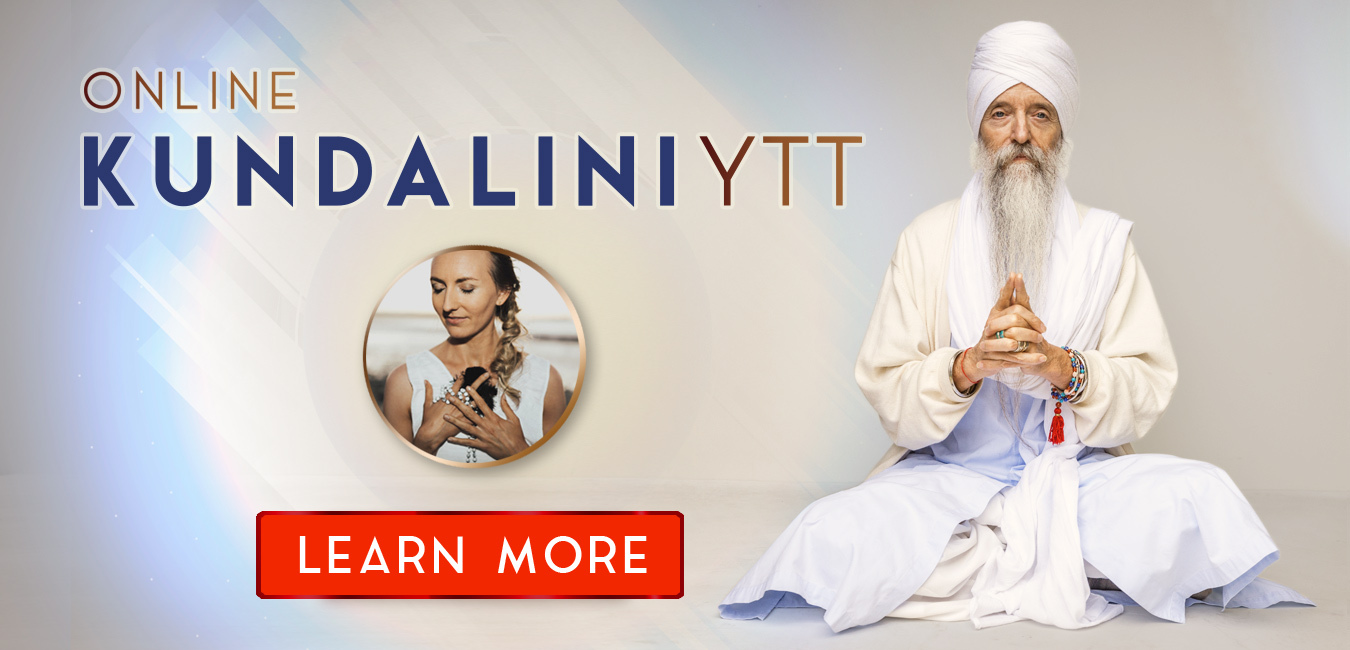Kundalini yoga isn’t just about physical poses—it’s a practice that awakens the energy within you, bringing balance to every part of your being: your body, mind, and spirit.
One of the core aspects of Kundalini is working with the chakras, the seven energy centers that run along your spine.
Each chakra is connected to different aspects of your life, from your sense of safety to your ability to speak your truth.
By incorporating specific Kundalini techniques like breathwork, mantra chanting, and meditation, you can clear blockages and activate your chakras, helping you align with your highest potential.
Ready to dive into the world of chakras? Let’s explore how Kundalini yoga can help you tune in and unlock the full power of your energy centers.
Kundalini Yoga And The Chakras

Kundalini yoga is a powerful practice that works directly with the seven chakras, or energy centers, in the body. Maybe you’ve heard of a Kundalini awakening before?
Kundalini energy rises from the base of the spine, moving through each chakra like a serpent uncoiling, clearing energetic blockages and awakening higher states of awareness. Each chakra of the seven main chakras is associated with different aspects of our physical, emotional, and spiritual well-being.
By using specific Kundalini yoga techniques—such as breathwork, movement, and chanting—you can activate, balance, and clear blockages in these energy centers, leading to greater alignment and harmony within. And you can invite kundalini energy to rise through your energy body and your human body, through each of the seven chakras.
Remember, a kundalini awakening originates from the first of the seven chakras at the base of the spine. This is why this energy is often referred to as Kundalini rising—because the chakras open along the spinal column. Think of your spine as the central channel for your chakras and energy body.
Kundalini yoga offers a unique path for deepening self-awareness and tapping into the potential of each of the seven chakras through yoga asanas and meditation techniques that awaken kundalini energy.
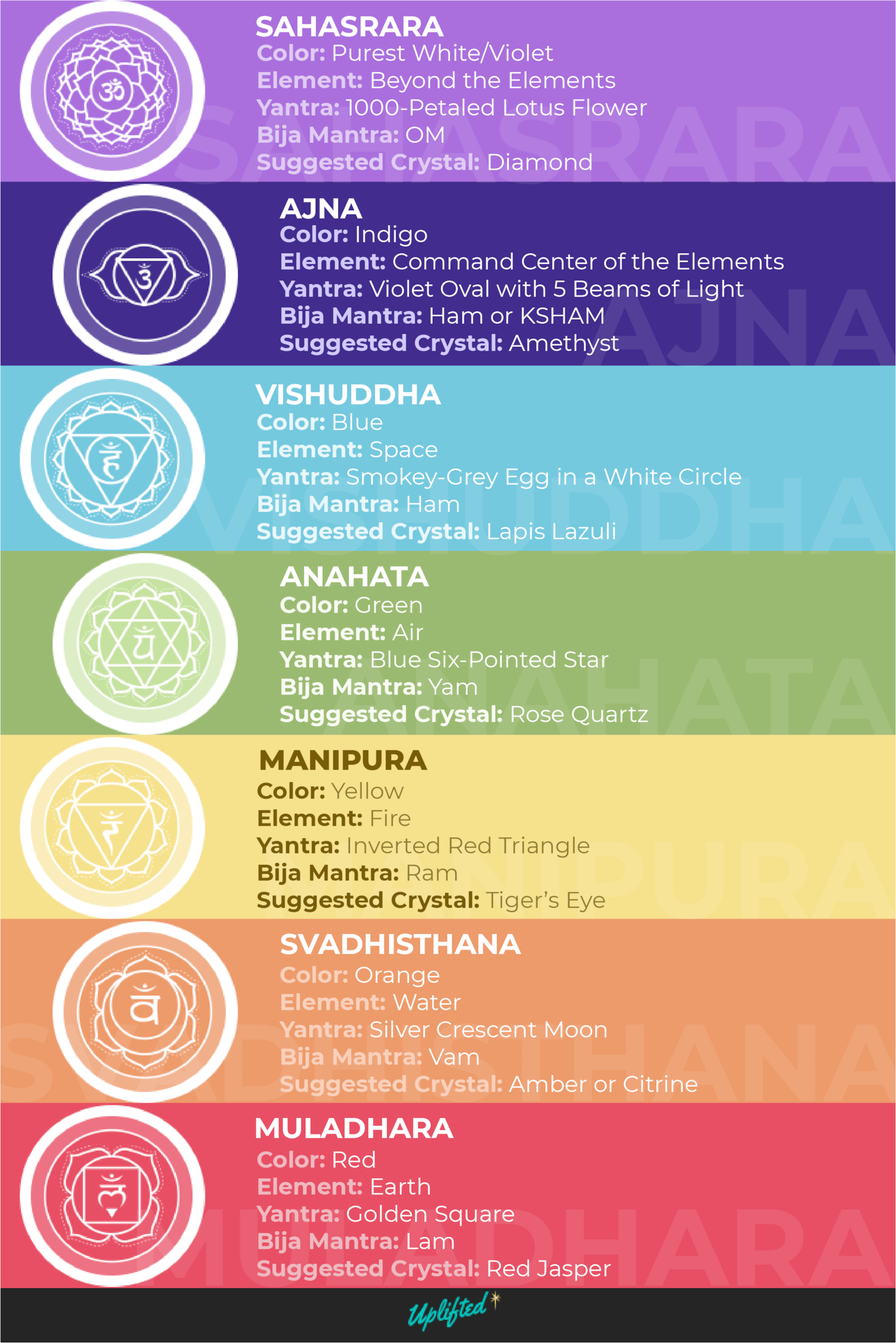
The seven chakras are energy centers along the spine in the human body, each representing different aspects of physical, emotional, and spiritual well-being:
- Root Chakra (Muladhara) – Located at the base of the spine in the physical body, this chakra symbolizes stability, security, and grounding. It governs our basic survival needs and connection to the earth.
- Sacral Chakra (Svadhishthana) – Found just below the navel and near the belly button, it represents creativity, pleasure, and emotional expression. This chakra is associated with passion, relationships, and the flow of life.
- Solar Plexus Chakra (Manipura) – Situated in the upper abdomen, it embodies personal power, confidence, and self-discipline. It is the center of willpower and transformation.
- Heart Chakra (Anahata) – Located at the center of the chest, it represents love, compassion, and connection. It bridges the physical and spiritual realms, fostering harmony in relationships.
- Throat Chakra (Vishuddha) – Positioned at the throat, this chakra governs communication, truth, and self-expression. It helps us speak with authenticity and clarity.
- Third Eye Chakra (Ajna) – Found between the eyebrows, it symbolizes intuition, insight, and inner wisdom. It is the gateway to higher consciousness and deeper perception.
- Crown Chakra (Sahasrara) – Located at the top of the head, this chakra represents spiritual connection, enlightenment, and unity with the universe. It transcends the physical and connects us to the divine.
When practiced consistently, Kundalini helps cultivate balance by releasing stagnant energy and supporting the flow of vitality throughout the body.
Kundalini, often described as a dormant serpent coiled at the base of the spine, is a core concept in Tantra—its awakening leads to spiritual enlightenment by traveling through the chakras.
Kundalini Tantra teaches certain yoga concepts that show how this energy can be activated in the human body through rituals, breathwork, mantras, and meditation, allowing practitioners to transcend limitations and experience union with the divine.
Rather than suppressing desires, Tantra integrates all aspects of life, including physical, emotional, and sexual energy, as a means to reach higher consciousness. Even subtle prana in the solar plexus region is important.
By focusing on each chakra, practitioners can address specific areas of their lives—whether it’s increasing self-expression (throat chakra) or cultivating a sense of safety and stability (root chakra)—ultimately leading to holistic healing and growth.
Benefits Of Balancing The Chakras
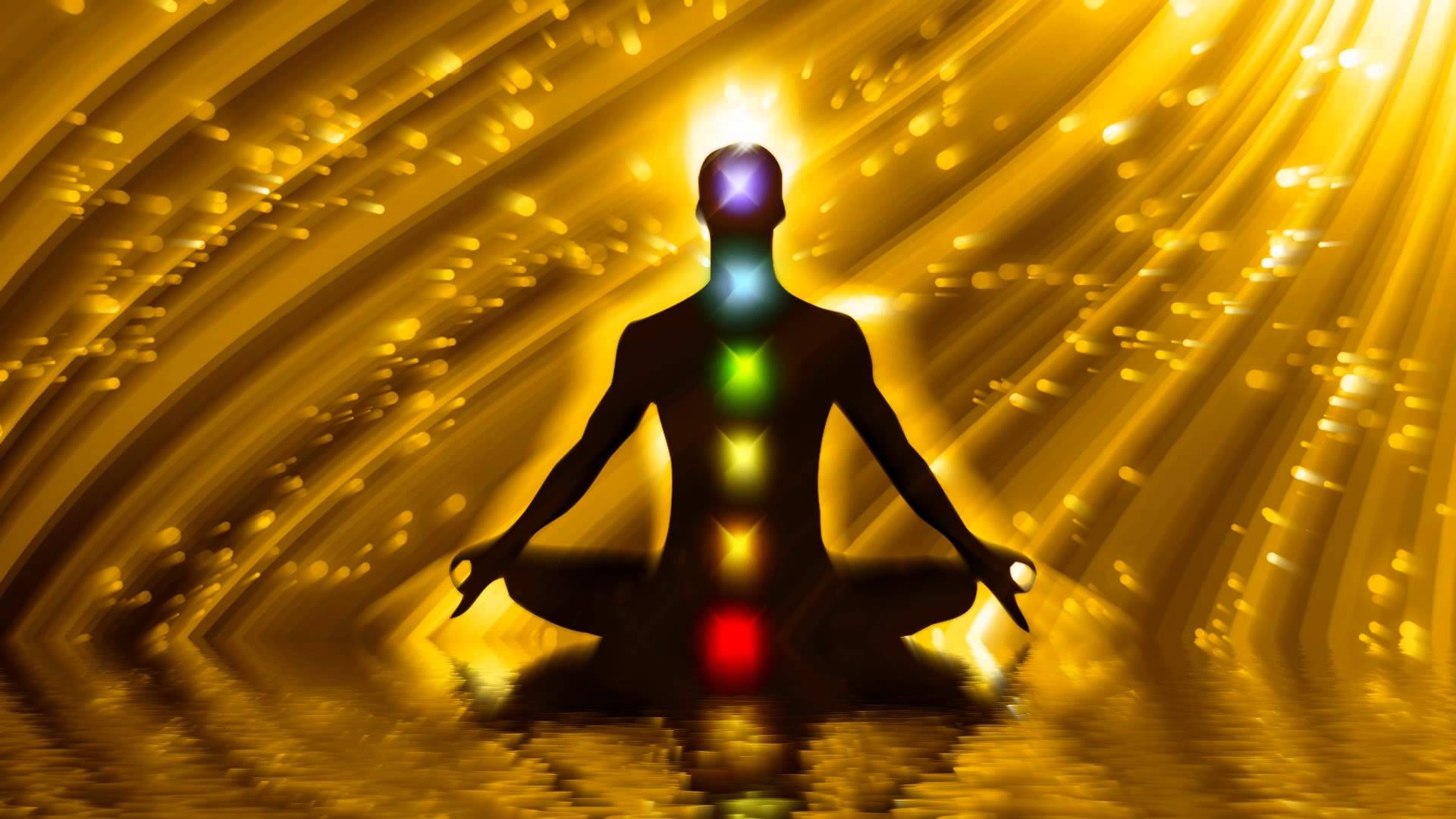
Balancing the chakras through practices like Kundalini yoga can have profound effects on both physical and emotional well-being.
By working to clear blockages and restore flow through these energy centers, individuals may experience improvements in their overall health, emotional stability, and mental clarity.
Research supports that practices aimed at balancing energy centers can reduce stress, enhance mood, and improve focus (International Journal of Yoga, 2013). Below are some key benefits of balancing the chakras:
- Increased emotional well-being – When the heart chakra is balanced, you may experience more love, compassion, and empathy, reducing feelings of isolation or emotional pain.
- Enhanced mental clarity – Balancing the third eye chakra can improve intuition, focus, and decision-making abilities.
- Physical healing – The root, when aligned, supports overall vitality and a sense of grounding, reducing symptoms of fatigue and stress.
- Reduced anxiety – Balancing the throat chakra can lead to better communication, reducing the fear of speaking your truth and easing anxiety related to self-expression.
- Improved creativity – A balanced sacral chakra encourages creativity and emotional expression, helping to break through creative blocks.
These benefits, among others, lead to a more harmonious, healthy life by supporting the free flow of energy throughout the body.
Take my quiz to learn if YOUR kundalini energy is awakened 👇
How To Practice Kundalini Yoga For Chakras
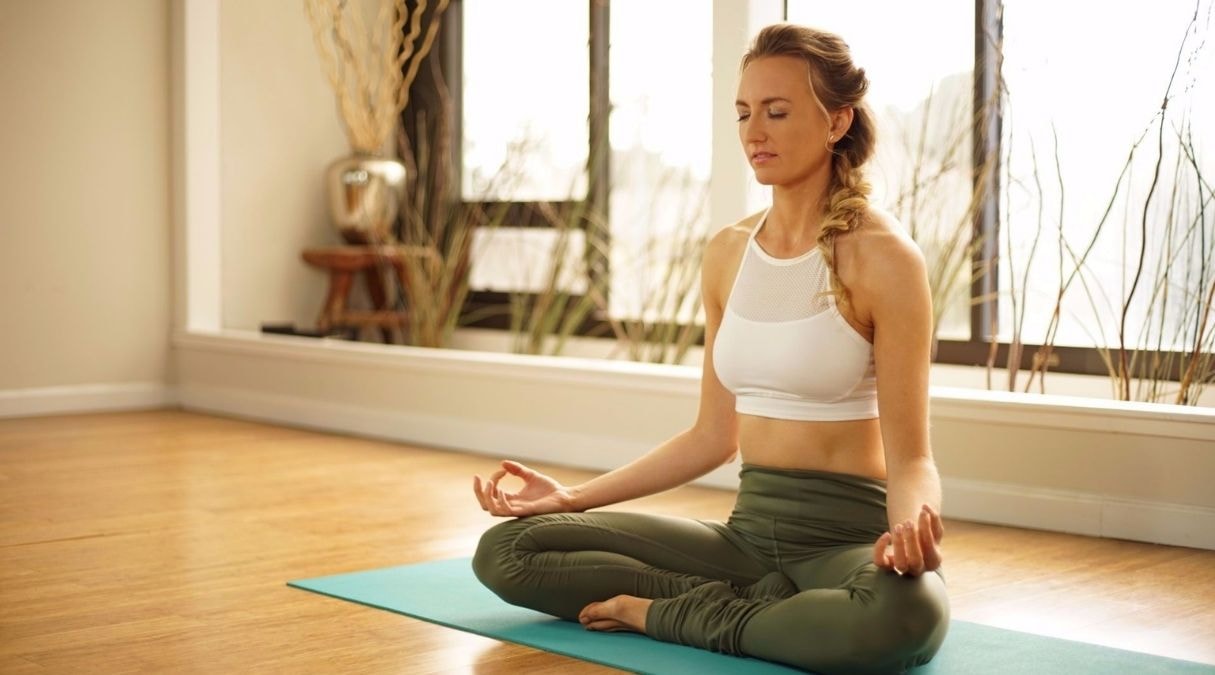
To balance your chakras with Kundalini Yoga, incorporating specific poses can help activate and align each energy center. You can add in kundalini mudras too.
Each posture targets a different chakra, encouraging stability, emotional release, and spiritual connection.
Here are kundalini yoga poses designed to stimulate and harmonize your chakras, helping you feel more balanced and energized.
Are You Chanting Correctly? Refine Your Tune with Me! 👇

Are You Chanting Correctly? Refine Your Tune with Me!

1. Root Chakra (Muladhara Chakra): Tree Pose (Vrksasana)
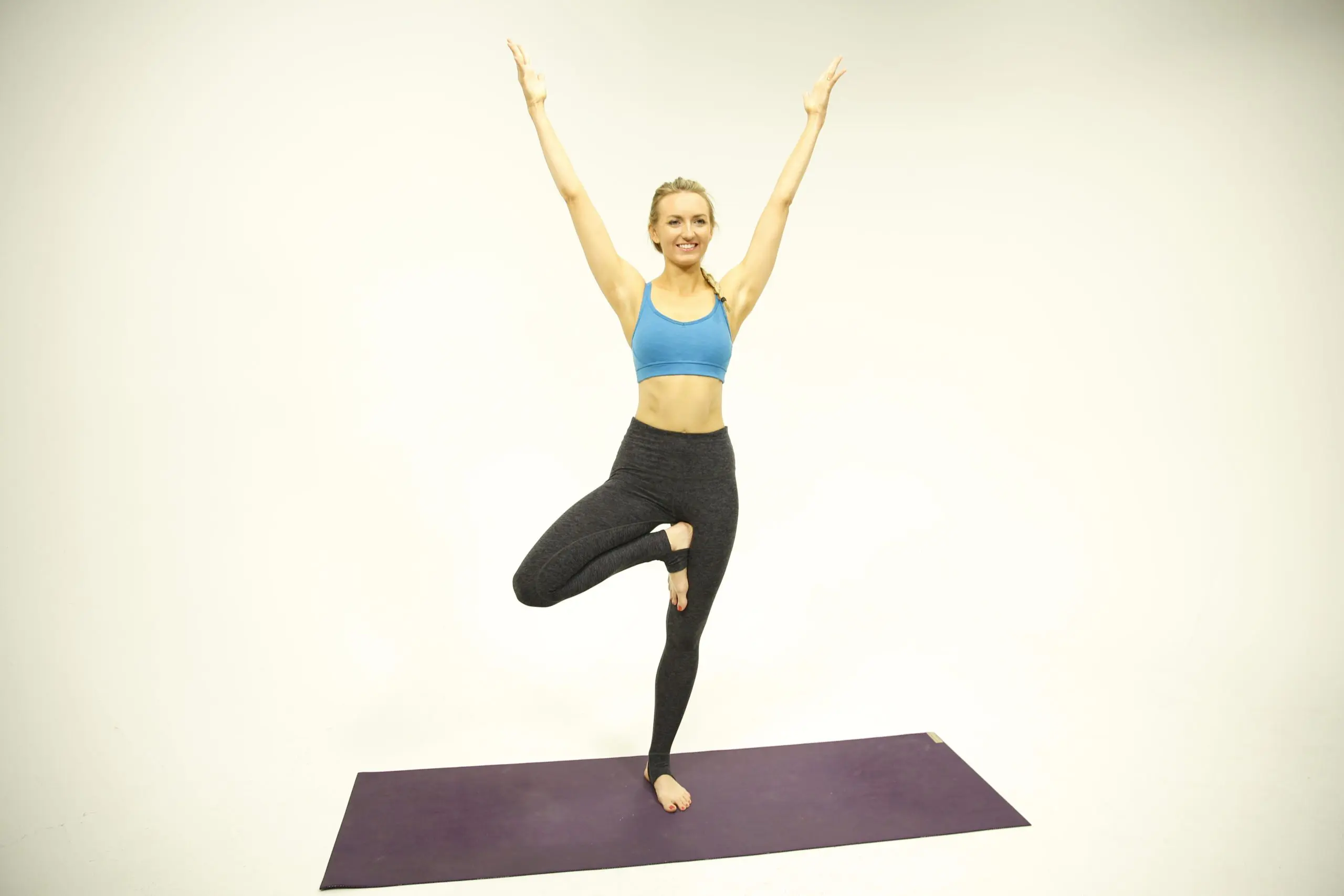
- Start in a standing position with feet hip-width apart.
- Shift your weight onto one leg and bring the sole of the opposite foot to the inner thigh or calf (avoid the knee).
- Bring your hands to prayer position in front of the chest or extend them overhead, palms facing each other.
- Hold the pose and focus on grounding through the standing leg and lengthening the spine.
Variations: If balancing is difficult, practice with a hand on the wall or a chair for support. You can also place the foot lower on the standing leg (around the ankle) for extra stability.
Benefits: Tree pose helps activate and stabilize the root chakra, fostering a sense of grounding, balance, and connection to the earth. This posture builds leg strength and stability, while also calming the mind and enhancing focus.
Pro Tips for Yoga Teachers:
- Encourage students to engage the standing leg and avoid locking the knee, creating a strong foundation.
- Remind students to keep their chest open and shoulders relaxed, guiding them to breathe deeply for calm and centeredness.
- Offer modifications by suggesting students practice the pose with their foot on the floor (like a “kickstand” version) if they need more balance support.
2. Sacral Chakra (Svadhishthana Chakra): Seated Forward Fold (Paschimottanasana)
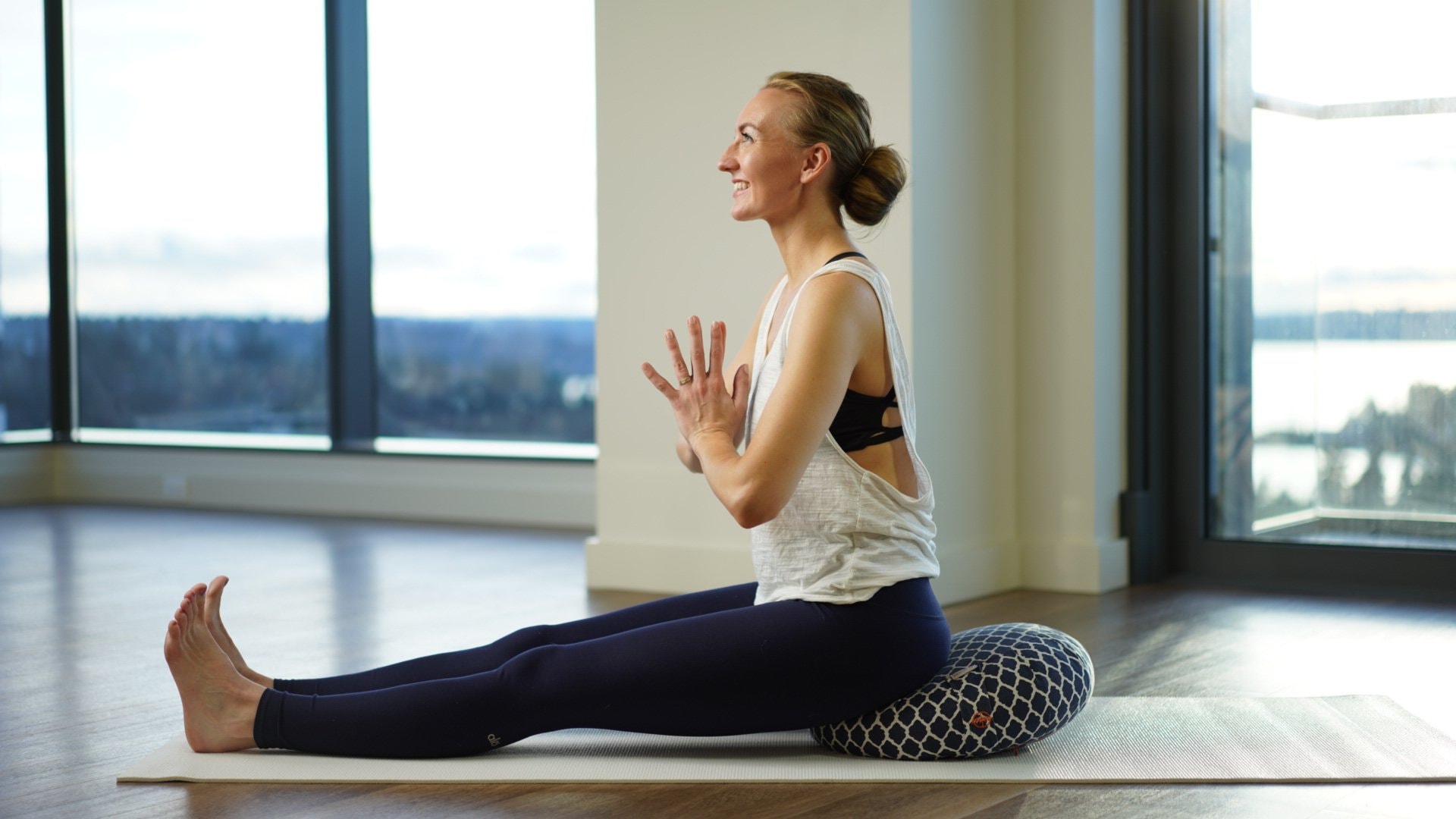
- Sit on the floor with your legs extended in front of you.
- Inhale and lengthen your spine, then exhale as you reach for your feet, folding forward.
- Keep your back straight and avoid rounding the spine too much.
Variations: Use a yoga belt around the feet or place a block under the forehead for support.
Benefits: This pose opens the hips and stretches the lower body, stimulating the sacral chakra and enhancing creativity and emotional release.
Pro Tips for Yoga Teachers:
- Encourage deep, slow breathing to help release emotional tension stored in the hips.
- Remind students that flexibility isn’t the goal—feeling the stretch and engaging the body mindfully is key.
- Suggest students bend their knees slightly if they feel discomfort in the hamstrings.
3. Solar Plexus Chakra (Manipura Chakra): Boat Pose (Navasana)
- Begin seated with your knees bent and feet flat on the floor.
- Lean back slightly and lift your legs off the ground, keeping them bent or straight.
- Extend your arms forward to parallel with the floor. Hold the position for several breaths.
- Think of this yoga pose as a form of self actualization. You’re tapping into your primary source of power, right above your navel. Begin to let your breathing deepen this pose.
Variations: Keep the knees bent for a less intense version or use a block under your seat for support.
Benefits: Strengthens the core and stimulates the solar plexus chakra, helping to build personal power, confidence, and self-esteem.
Pro Tips for Yoga Teachers:
- Remind students to engage their core and keep their spine long to prevent slouching.
- Encourage a gentle breath pattern, allowing each inhale and exhale to support the lift of the legs.
- Offer props like a cushion or block for extra support under the seat if students feel strain.
4. Heart Chakra (Anahata Chakra): Camel Pose (Ustrasana)

- Start on your knees, keeping them hip-width apart.
- Inhale and arch your back, reaching for your heels with your hands, and lifting your chest toward the ceiling. Keep your neck relaxed and eyes gently closed.
Variations: Keep your hands on your lower back for extra support or place a cushion under your knees if they feel uncomfortable.
Benefits: This heart-opening backbend helps release emotional blockages and encourages compassion and love, activating the heart chakra.
Pro Tips for Yoga Teachers:
- Encourage students to keep their hips aligned over their knees for proper posture.
- Remind students to avoid collapsing in the lower back by engaging the core throughout the pose.
- Offer the option to keep hands on the lower back if full arm extension is too intense.
5. Throat Chakra (Vishuddha Chakra): Fish Pose (Matsyasana)

- Lie on your back and place your hands under your hips.
- Inhale and lift your chest, arching your back while the crown of your head gently touches the floor. Keep your legs active and engage your core.
Variations: Keep your legs straight or bend your knees to decrease the intensity.
Benefits: This pose opens the throat area, encouraging clear communication and enhancing expression, which directly benefits the throat chakra.
Pro Tips for Yoga Teachers:
- Remind students to keep their neck long and avoid straining the throat.
- Encourage students to breathe deeply and focus on the opening of the chest and throat.
- Offer a modification by having students practice the pose with a bolster or pillow under the back for added support.
6. Third Eye Chakra (Ajna Chakra): Child’s Pose with Forehead on the Ground
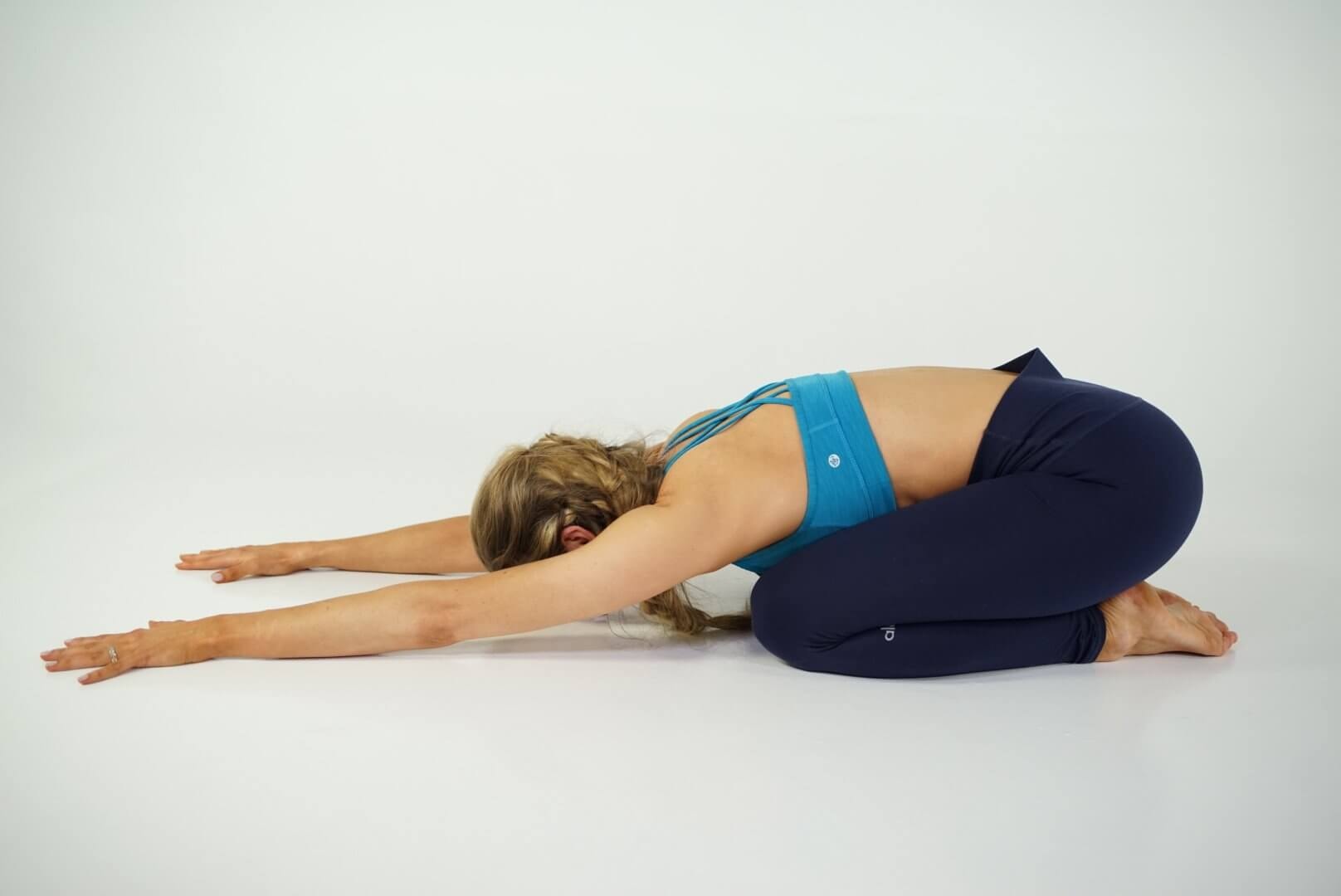
- Kneel on the floor and gently sit back on your heels.
- Extend your arms forward and lower your forehead to the mat, allowing the body to relax.
- Focus on softening the mind and breathing deeply into your spinal column.
- Add mantra repetition to uplevel this pose.
- Visualize this pose opening your pituitary glands, offering your a profound connection with the earth element below you and your third eye. Picture a blooming thousand petalled lotus in the center of your forehead as you connect with the earth. Your brain is taping into a higher discrimination that will give you access to self actualization, mind communication, and clarity.
Variations: Place a cushion under the forehead if it feels uncomfortable to touch the floor.
Benefits: This restorative pose encourages mental clarity and mindfulness, stimulating the third eye chakra, which is connected to intuition and insight.
Pro Tips for Yoga Teachers:
- Encourage students to soften their gaze or close their eyes to deepen the meditative state.
- Remind students to release any tension in the shoulders and neck, allowing the forehead to gently rest on the mat.
- Offer a block or cushion under the hips if the knees are uncomfortable.
7. Crown Chakra (Sahasrara Chakra): Savasana (Corpse Pose)
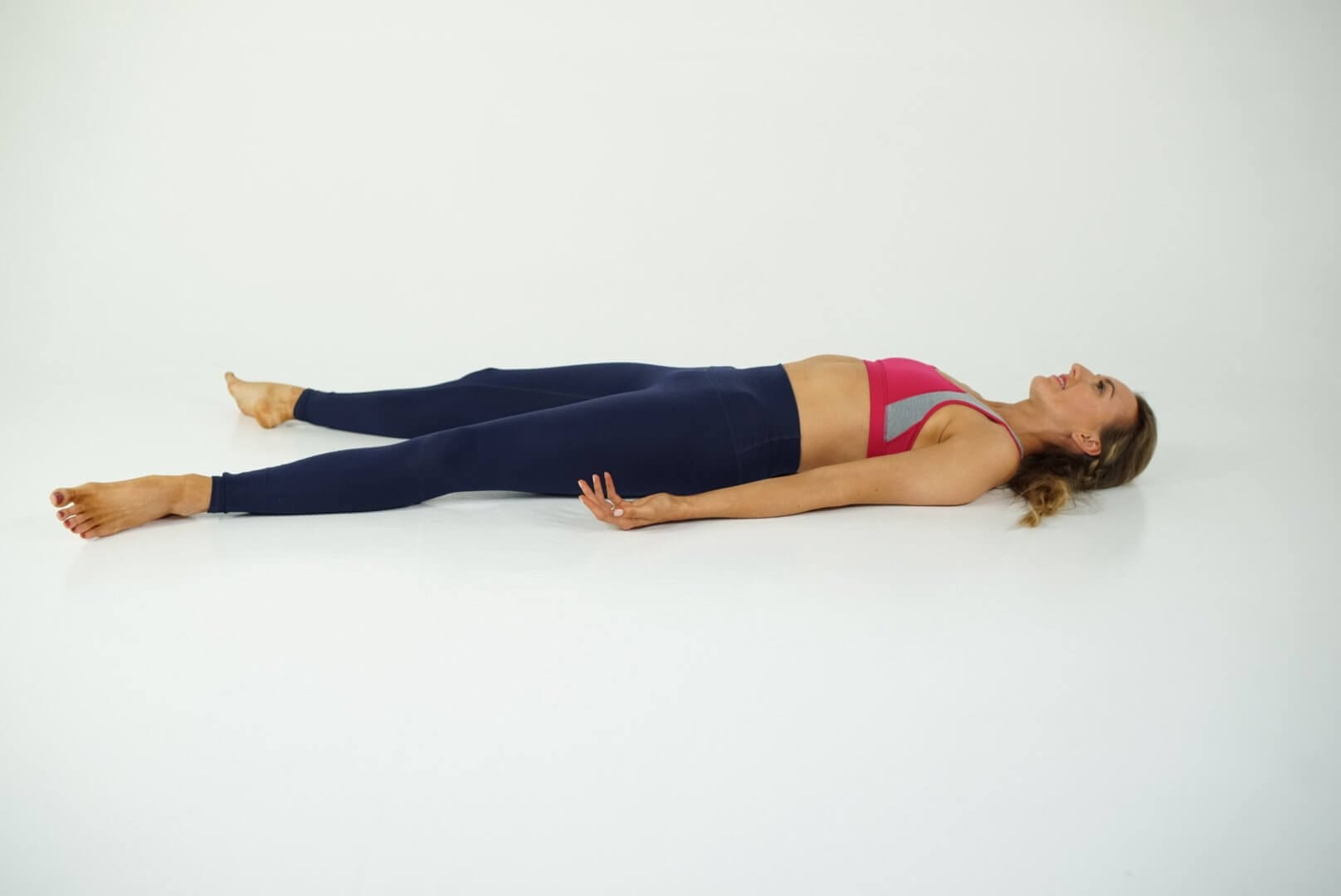
- Lie flat on your back with your legs extended and arms by your sides, palms facing up.
- Close your eyes and focus on your breath, allowing the body to completely relax.
- Let go of any negative experiences and allow your prana to to flow from your brain to your toes. The only thing you need to achieve in this exercise is to allow your emotions to arise and to let your breathing go deeper in a yogic fashion. Let your natural wisdom come forward and let go of trying to achieve anything else.
Variations: Use a bolster under the knees or a blanket over the body for added comfort.
Benefits: Savasana helps quiet the mind and bring awareness to the crown chakra, enhancing spiritual connection and mindfulness.
Pro Tips for Yoga Teachers:
- Guide students to focus on the breath and the sensation of energy moving through the body.
- Encourage deep relaxation, reminding students that this is the time for integration after practice.
- Use a soft voice and calming cues to help students enter a deeply meditative state.
Each of these poses works to balance and open the specific chakras, enhancing the flow of energy throughout your body and promoting overall health and well-being.
Take my Kundalini Yoga for Your Chakras Class
By practicing these poses, you’re not only aligning your chakras but also creating a clear pathway for Kundalini energy to rise.
Each movement helps release blockages, enhance vitality, and deepen your mind-body connection.
Now, it’s time to put it all together!
In this 20 minute class, we’ll balance our chakras and awaken our kundalini at the same time. Try it out today!
Closing Thoughts

The journey of Kundalini awakening is unique for everyone, so trust your body, stay present, and enjoy the process. As you continue your practice, you may notice increased clarity, emotional balance, and a stronger connection to your intuition. Let your kundalini energy flow!
Next Steps
- Ready to teach Kundalini? Try out 3 free classes from 200-hour Kundalini yoga teacher training.
- Kundalini Yoga doesn’t have to be intimidating or frustrating. Take my Kundalini Demystified class.
Get 3 Free Training Vidoes from our Kundalini University Experience & Certification Program
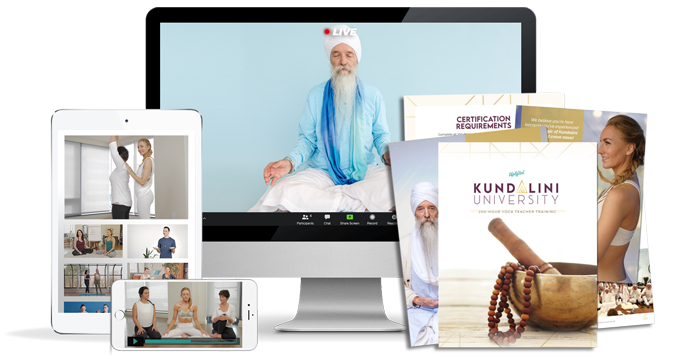
YOU MIGHT ALSO LIKE
- Trauma-Informed Kundalini Yoga: A Heart-Centered Approach to Healing
- Harnessing the Power of Kundalini Divine Feminine for Transformation
- Kundalini for Feminine Energy: Ignite Your Creative Power and Passion
- Mastering the Sufi Grind: Benefits and Techniques for All Levels
- Kundalini Yoga for Chakras: An Uplifted Guide to Energy Balance
- Discover the Benefits of the Gobinday Mukunday Mantra for Well-Being
- Nabhi Kriya: Ignite Your Inner Fire and Personal Power
- Ek Ong Kar Sat Gur Prasad: Kundalini Mantra For Manifestation
- Tantric Har Chant: How It Fuels Prosperity and Inner Power
- Powerful Mantra for Protection Against Negative Energy and Harm
- The Power of Humee Hum Brahm Hum Mantra for Connection and Healing
- The Sa Re Sa Sa Mantra: Connecting Breath, Light, and Creativity
- What Is The Ajai Alai Mantra In Kundalini Yoga?
- What Is Sat Nam Rasayan? How And When To Practice
- The Meaning Of Ang Sang Wahe Guru Mantra in Kundalini Yoga



